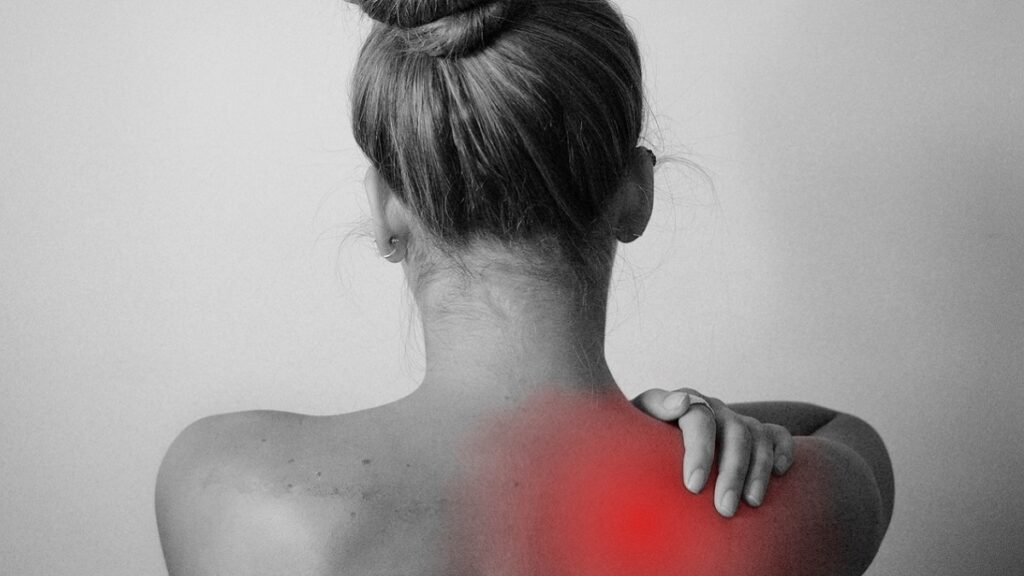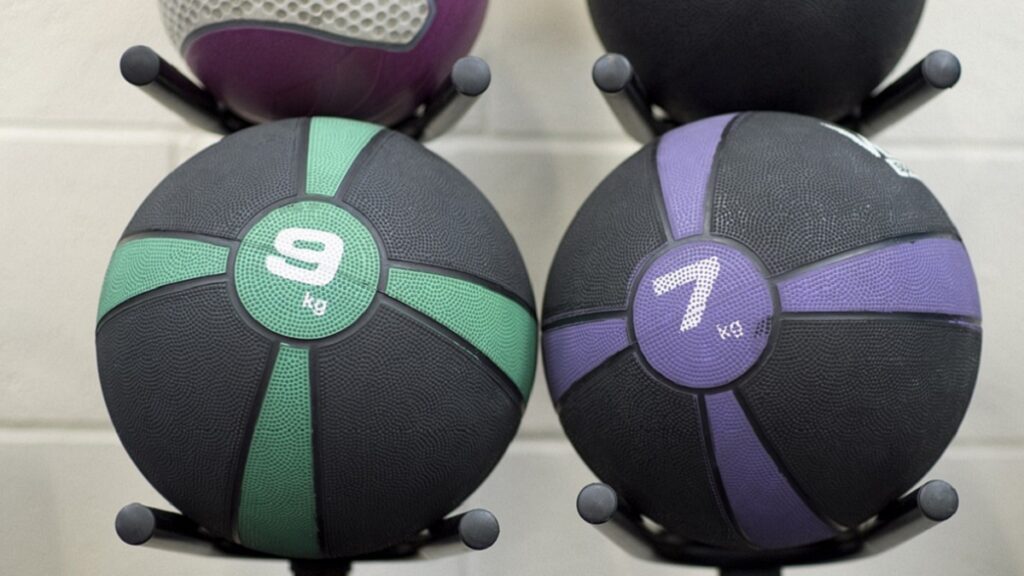Calcium deposits in shoulder exercises are crucial for shoulder calcific tendonitis victims. What is shoulder tendonitis, though? It is a painful inflammation that follows the gradual build-up of calcium deposits around your shoulder’s rotator cuff tendons.
Once calcium piles up around the tendon, it strains the surrounding tissues, thereby causing a great deal of shoulder pain. The deposits also cause swelling.
Calcium deposits in shoulder exercises help you regain your shoulder mobility and the lost strength of the shoulder blade muscles. You dissolve calcium deposits in your shoulder by injecting sterile saline into the affected area to break down the calcium. Also, you treat calcification in the body naturally through exercise, moist heat, and ice.
Read on to find out more!
Calcium Deposits in Shoulder Exercises
When you suffer from shoulder calcific tendonitis, you lose control of the rotator cuff due to injured tendons. The range of motion in the shoulder area is also greatly affected. Calcium in shoulder exercises helps you restore your normal shoulder movements. Furthermore, they help you strengthen the muscles that control the shifts of your shoulder blade.
Essentially, exercises that improve the symptoms of calcific tendonitis are range-of-motion exercises. These involve the rolling of shoulders and lifting of shoulder blades.
However, ensuring that these workouts reach your rotator cuff muscles is important. It is the only way to restore their strength and, thus, the stability of your shoulder.
In most cases, heat or ice treatment comes before physical therapy to ease the searing pain of calcific tendonitis.
When Should the Shoulder Exercises Start?
Physical therapists and orthopedic experts say treatment for the affected shoulder should not delay. The condition can easily worsen to chronic shoulder pain or, at worst, a frozen shoulder. A frozen shoulder occurs when a painful stiffening of the joint capsule hinders the shoulder joint’s normal mobility.
This is why you should not ignore seeing a doctor as soon as you realize you have a problem with your shoulder.
Physical Therapy Sessions
Apart from calcium deposits in shoulder exercises, simple sitting or standing posture changes can also ease your pain. However, it is advisable to seek the services of a well-trained physical therapist. An expert ensures you exercise the right muscle groups and monitor your form.
Besides, the therapist engages you in workouts to retrain your shoulder muscles to maintain the humerus’s position in its socket. Therapists also provide a home exercise program to guide you in your recovery.
Home Exercises for Shoulder Calcific Tendonitis
It is advisable to stretch intensely but carefully to boost the benefits of your home exercises. Push your body to a full stretch until it almost hurts. It is the only sign that your stretch is proper and helpful.
However, you should avoid stretching your muscles to the point where you hold your breath in pain. If this is the case, you are overdoing it.
Here is a list of the most effective exercises for shoulder calcific tendonitis:
Shoulder Stretch
One of the best calcium deposits in shoulder exercises is shoulder stretch. To do it, you will need a stretching strap. First, you sit on the floor with the soles of your feet close to and touching each other. Then move your arms behind you.
Now, insert your right hand in the right band of the stretching band. Do the same for the left hand on the left band.
Slide forward on your buttocks until your elbows become stiff. If you do this right, you should feel your shoulders ache.
Try to increase the stretch every time you exhale by sliding further forward by your buttocks. When you sense an intense ache, try to persist for two minutes. However, you should avoid sudden shifts of your shoulders as this can cause injury.
To stop the stretch, wiggle backward on your buttocks until you can pull your hands out of the stretching strap.
Shoulder Rolling
Shoulder rolls are the perfect shoulder joint exercises for removing strain and boosting blood flow on the rotator cuff tendons. Doing this helps reduce stiffness and pain in the affected joints.
You must adjust your posture for the perfect shoulder roll by standing straight and freely dropping your hands.
Start by rolling the shoulders in an anticlockwise manner ten times. Repeat the procedure in a clockwise manner the same number of times.
Upward and Downward Movement of Shoulder Blades
Moving your shoulder blades up and down—10 times per session— while keeping an upright posture is a sure way to improve the shoulder joint’s mobility range. Therefore, consider including this in your calcium deposits in shoulder exercises list.
Upper Back Stretch
You first go down on an exercise mat on your hands and knees to stretch your upper back. Move your knees backward so your arms are stiff and your elbows lock.
Then, spread your knees and move your chest towards the floor until you feel a slight ache in your shoulder joint and upper back.
When breathing out, intensify the stretch by forcing your chest closer to the floor. At the point of maximum stretch, hold on for two minutes.
Slowly move your limbs to their normal position when the count is over. Rest for some minutes before repeating the workout.
Pendulum Movement of The Hands
While you maintain an upright posture with the hands relaxed on the sides, swing the left hand in front and back—like the swing of a pendulum—ten times. Repeat the exercise with the right hand.
How Do You Dissolve Calcium Deposits in Your Shoulders?
You dissolve calcium deposits in your shoulders by performing the lavage procedure that begins with rinsing the affected area with a saltwater solution using two large needles. The saltwater solution (sterile saline) breaks down the hard calcium particles. The broken particles are then “washed away” by a special fluid from the two needles.
The percutaneous needling that comes after the calcium deposit breaks down is made possible by ultrasound. It helps direct the needle to the area affected by calcification.
Sometimes the lavage process may only succeed in breaking loose the calcium particles but fall short in removing them. Nevertheless, dissolving the particles means that the pressure in the tendon reduces; hence the pain is lesser. In instances where the procedure succeeds in removing the calcification, you are assured of faster healing.
Physical Examination Before Treatment
Doctors rarely start any treatment plan before a thorough physical exam of your shoulder. They also interview you for a detailed medical history.
The physical examination involves rolling your shoulders, lifting your arm in different directions, or moving the affected joints. Through this, the doctor notes any limitations to your range of motion.
Treatment For Mild Cases of Shoulder Calcific Tendonitis
The lavage procedure—though common— is rarely the initial treatment for shoulder calcific tendonitis. Mild cases can be fully treated without needle incisions or open surgery.
For such cases, the doctors prescribe physical therapy and over-the-counter anti-inflammatory medication.
After the physical exams, the doctor runs X-ray scans to determine whether you have calcification in the affected area.
Doctors treat cases of acute inflammation with ice packs over the shoulder. In addition, they let you wear a sling on the affected shoulder—to allow it to rest.
However, for severe pain, a cortisone injection is done directly to the area to reduce it.
In some cases, calcific tendonitis is recurrent—two to three or more repeat cases of painful calcium deposits on the shoulder. Despite initial treatment, some calcium deposits appear to enlarge when scanned with X-rays. If such is the case, then it is time you thought about surgery to remove the calcium deposit directly.
However, before you go for surgery, there are some nonsurgical treatments besides the lavage procedure that you may want to consider to dissolve your calcium deposits.
Other Non-Surgical Treatment Procedures for Shoulder Calcific Tendonitis
Besides the lavage procedure, there are other non-invasive treatment procedures for shoulder calcific tendonitis.
- Extracorporeal Shock Wave Therapy (EWST): In this kind of therapy, the doctor delivers bearable mechanical shocks to your shoulder joint from a handheld device. The short sound pulses are strong enough to go through soft tissues and often relieve the pain caused by calcific tendonitis.
- RSWT shock wave therapy: Although this therapy is similar to EWST, the doctor directs medium-energy mechanical shocks to the affected area from a handheld device. According to Dr. Masci, shock waves are not painful but need up to 5 sessions to do any good.
- Therapeutic ultrasound: Calcification usually breaks up under high-frequency sound waves. Doctors use a small handheld device to deliver the therapeutic ultrasound.
- Nerve Stimulation: Physical therapists perform Transcutaneous electrical nerve stimulation (TENS) to reduce muscle spasms and stiffness.
Surgical Treatment of Shoulder Calcific Tendonitis
Surgery is the last option when all other treatments fail. Doctors recommend surgery after trying the other methods for at least six months.
There are two kinds of surgical procedures for shoulder calcific tendonitis:
- Open surgery: It is also known as open resection since the doctor makes a large incision on your shoulder with a scalpel and finds a way to the calcium deposits by cutting through tissues and muscles. Also, the doctor cuts the tendons of your shoulder to allow the manual removal of the calcium deposit.
- Arthroscopic surgery: This is the kind of surgery whereby a small incision is made on your shoulder to fit a small camera (arthroscope) whose lens guides a small surgical tool that removes the calcium deposit.
How Do You Treat Calcification in The Shoulder Naturally?
Looking for more ways to treat calcification apart from calcium deposits in shoulder exercises? You treat calcification in the shoulder naturally through physical therapy, topical application of ice, and moist heat. Physical therapy mostly involves physical exercise and massage. Once the swelling reduces, the range of motion exercises can restore mobility and strengthen the weakened tendons and muscles.
Workouts and massage reduce joints’ stiffness by easing the tendons’ burden. This reduces pain and makes your recovery faster.
Applying moist heat—especially from a towel dipped in hot water—helps reduce the pain from calcific tendonitis. The warmth soothes the joint.
On the other hand, applying ice packs on the area helps reduce pain and swelling but is usually recommended for fresh injuries.
Surprisingly, according to many health experts, rest is important in treating tendonitis. Many agree that it is caused by using the wrong technique in sports, repetitive movement, overworking the tendons, and repeated injury. Thus, they believe that rest can successfully undo this kind of damage.
Will Calcium Deposits in the Shoulder Go Away?
Yes, in most cases, calcific tendonitis heals on its own. Usually, it responds to pain medication, rest, and physical exercise. This is because the body reabsorbs the calcium deposits without special effort. The healing process may take six weeks, though.
According to WebMD, only 10% of calcific tendonitis cases go for shoulder surgery. The majority of the cases resolve through non-invasive methods.
Nonetheless, although calcific tendonitis can go away without treatment, it is always good to seek the doctor’s advice. The tendon injury may lead to complications like a frozen shoulder or rotator cuff tears if not treated well.
Since it waxes and wanes, it is crucial to plan for periodic checks if you have had it in the past.
Does Exercise Help with Calcification?
Yes, exercise helps with calcification. Although the problems tend to resolve independently over time, workouts speed up the recovery.
The piling up of calcium deposits stiffens the shoulder. The range of motion exercises proves helpful because they undo the damage by restoring the shoulder’s flexibility and, thus, mobility.
Besides, physical exercises retrain muscles. In our case, the muscles that move the shoulder plate regain strength after the injury under proper exercise. Workouts also restore the muscles that keep the shoulder joint aligned.
Once all the muscles regain their strength, pressure on the rotator cuff tendons decreases, making the healing process faster.
How Serious Are Calcium Deposits?
In the human body, it is normal for calcium deposits to form around soft tissues and organs. Calcification on the shoulder joint becomes serious when it hinders its free mobility, causing extreme pain and discomfort. Furthermore, the pile-up may dislodge the ball of the shoulder joint from its socket.
Although not life-threatening (in most cases), calcification signals that you have a health anomaly to address.
Can Calcium Deposits Be Massaged Away?
Yes, calcium deposits can be massaged away. Massaging a shoulder joint, for instance, increases blood flow to the joint. The increased flow helps dissolve the calcium deposits.
Even with this, massaging should not replace proper treatment. So, it is important to consult your doctor for calcification cases.
Can Stress Cause Calcium Deposits?
Yes, stress can cause calcium deposits. Tests on people with increased cortisol (stress hormone) levels have shown that they are more prone to high calcium deposits inside their arteries.
Nevertheless, more research on the relationship between the two is needed. However, a stress-free life is known to have a nexus with both mental and physical well-being.
Can Calcium Deposits Cause a Stroke?
Yes, calcium deposits can cause a stroke. However, the only calcium deposits that can cause stroke are the ones that form in the arteries. Those that form on the shoulder pose no risk of stroke.
Like deposits of fatty substances, calcium build-up in arteries makes one prone to coronary artery disease. Such a condition makes you prone to stroke and heart attacks.
FAQs
Does Exercise Help Calcific Tendonitis?
Yes, exercise helps calcific tendonitis. It restores the range of mobility shortened by the injury. When the strength of the shoulder joint tendons and muscles increases, the joint operates normally once again.
What Foods Should I Avoid with Calcific Tendonitis?
The foods that you should avoid with calcific tendonitis are those that induce inflammation. You should avoid inflammatory foods, including sugar, refined carbs, alcohol, and trans fats. Some other foods and beverages that carry these hostile ingredients are soft drinks, french fries, donuts, white bread, and pasta.
So, don’t just focus on the calcium deposits in shoulder exercises; eat the best anti-inflammatory foods such as green vegetables, berries, nuts, and turmeric. Additionally, extra virgin olive oil is the best for your diet when dealing with such an injury.
Besides, taking foods high in collagen, like bone broth, is highly beneficial. Such a diet plays a huge role in the healing and repair of worn tissues.
Moreover, magnesium and zinc foods help tendon and muscle repair.
How Long Does the Calcific Stage Last?
The calcific stage lasts about 12 to 18 months. The calcium deposit is completely reabsorbed back into the body by this time.
However, some victims’ symptoms are severe and take longer to resolve. For some, the recovery is quite slow. In such cases, surgery becomes the best option.
Conclusion
Calcium deposits in shoulder exercises provide some of the best methods for full recovery from shoulder calcific tendonitis. However, timing is key. It is important to wait until the swelling decreases to avoid further injury. Physical exercises start from how you sit to how you position your arms when stretching the shoulder muscles.
The advice I could give from experience is that the guidance of a physical expert is vital. The expert will monitor your recovery and advise on the right muscle groups to focus on when working out. This will save you future chronic problems with the shoulders!



